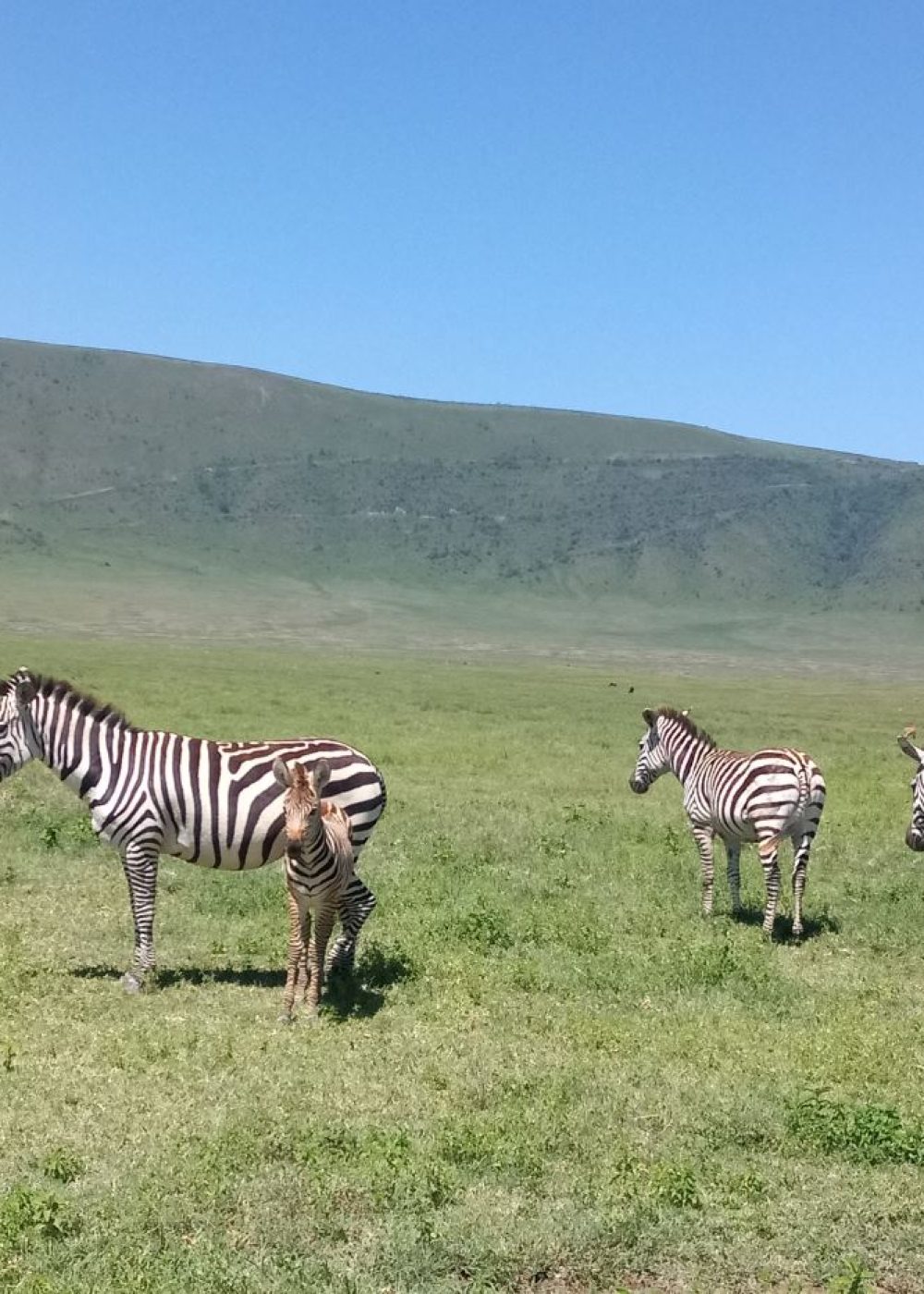A UNESCO World Heritage site, the Ngorongoro Crater is one of the most unique places on the planet and a not-to-be-missed attraction for travelers to Tanzania.
The ancient Ngorongoro Crater is a UNESCO world heritage site and one of the most interesting parks of Tanzania. A safari tour of the Ngorongoro National Park is your chance to see the greatest number of wildlife species per square kilometer. The Crater – set amidst the tropical forests of the Great Rift Valley highlands – is the crown jewel of Tanzania’s National Parks. The tour, beginning at the Crater rim with its breathtaking views of the Crater floor and carrying on to the game drive in the Crater itself with its plains, acacia woodlands and lakes teeming with bird- and wildlife, shall leave you with a sense of wonder to be cherished for the rest of your life!
We customize a safari for you based on your budget……welcome to Tanzania
The Ngorongoro Crater is within the Ngorongoro Conservation Area, an incredible area: steeped in history from archeological finds at the Olduvai Gorge, Empakai crater hikes, and breathtaking scenery from the Rift Valley Highlands. The Crater itself is a UNESCO World Heritage Site as it is the world’s largest, intact (but inactive) volcanic caldera. It also boasts the highest population of wildlife species per square kilometer anywhere in Tanzania. The Crater is also home to the endangered black rhinoceros and is one of the few remaining places in the world where this ancient creature may be spotted in the wild. A tour of Ngorongoro Crater begins at the crater rim, with breathtaking views of this ancient crater from above, and continues with a game drive within the Crater itself. Visitors experience acacia woodlands and lakes, teeming with bird-life, and plains filled with zebra, antelope, wildebeest, and elands. Visitors are sure to see lions lounging in the tall grass, and enjoy lunch near a pond of hippopotami. From the endless zebra walking dangerously close to the sleeping lion to the rare black rhinoceros, Ngorongoro Crater will leave you with a sense of wonder unlike any other place on earth.
Ngorongoro Wildlife Ngorongoro Crater offers the highest density of animal species in Tanzania. An early morning safari will give you the best chance to spot the reclusive leopard in highlands trees as you approach the Crater. Unique African Big Cats that can be seen here include the catious caracal and serval cats. The small herd of elephants are residents, as they cannot climb up the steep sides of the crater, they can be seen drinking at the lakes or enjoying the shade of the woodlands. Zebra and wildebeest graze on the plains of the Crater floor under the ever-watchful eyes of a pride of lions, who are also residents because hunting is easy in the Crater. Ancient hippos and the endangered black rhino have their homes in Ngorongoro Crater. And a safari lunch near the hippo pond will surely include bird-sightings such as the well-named superb starling and native guinea fowl.



The Ngorongoro Crater is the remnant of the explosion of a huge volcano, which happened two to three million years ago. Being as high as 1,800 meters (5,900 feet) above sea level, this area can be hot in the day with cold highland nights. With its 264 square kilometer (102 square mile) expanse of the Crater floor nested between the steep 610-meter- (2,000-foot)-tall sides of the Crater, it is a must-see destination. Ngorongoro Crater lies in the Crater Highlands of North Tanzania. It is part of the Ngorongoro Conservation Area and is one of the Seven Wonders of Africa. In 1951, in great part thanks to the efforts of Michael and Bernard Grzimek, the Ngorongoro Crater was declared a National Park. The zebra-striped airplane they used to undertake aerial surveys and animal census was a common site over the Crater and neighboring highlands at the time. One of these flights ended in tragedy, when the twenty-five-year-old Michael Grzimek died in a crash. His father Bernard wrote the famous book “Serengeti shall not die” which we strongly recommend to all those travelling in the North of Tanzania.
Write to our newsletter to receive updates on safaris and what’s new coming and special bonuses.
Arusha, Tanzania
info@swahililandexpeditions.com
+255 757 970 296
Safaris and more adventure to East Africa national cost, hiking and trekking experience and to the beautiful Islands and beaches.
Swahili Expeditions